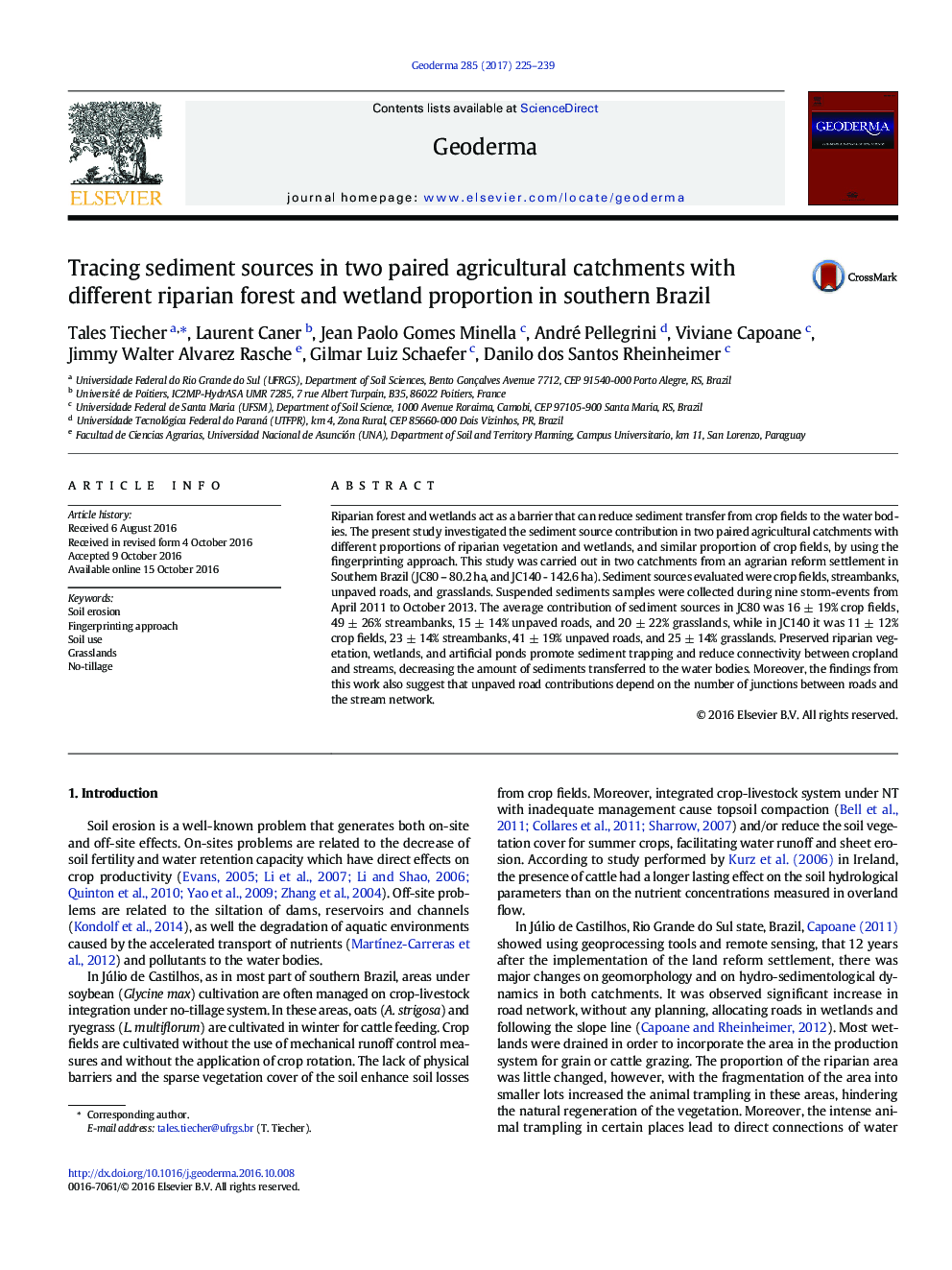| Article ID | Journal | Published Year | Pages | File Type |
|---|---|---|---|---|
| 6408222 | Geoderma | 2017 | 15 Pages |
â¢Sediment source contribution was investigated in two paired agricultural catchments.â¢Highest contribution to soil erosion were attributed to streambank and unpaved road.â¢Streambanks contribution was higher during the rising limb of storm-events.â¢Junctions between roads and the stream network increases unpaved road contribution.â¢Cropland contribution was low due to sediment trapping promoted by wetlands.
Riparian forest and wetlands act as a barrier that can reduce sediment transfer from crop fields to the water bodies. The present study investigated the sediment source contribution in two paired agricultural catchments with different proportions of riparian vegetation and wetlands, and similar proportion of crop fields, by using the fingerprinting approach. This study was carried out in two catchments from an agrarian reform settlement in Southern Brazil (JC80 - 80.2 ha, and JC140 - 142.6 ha). Sediment sources evaluated were crop fields, streambanks, unpaved roads, and grasslands. Suspended sediments samples were collected during nine storm-events from April 2011 to October 2013. The average contribution of sediment sources in JC80 was 16 ± 19% crop fields, 49 ± 26% streambanks, 15 ± 14% unpaved roads, and 20 ± 22% grasslands, while in JC140 it was 11 ± 12% crop fields, 23 ± 14% streambanks, 41 ± 19% unpaved roads, and 25 ± 14% grasslands. Preserved riparian vegetation, wetlands, and artificial ponds promote sediment trapping and reduce connectivity between cropland and streams, decreasing the amount of sediments transferred to the water bodies. Moreover, the findings from this work also suggest that unpaved road contributions depend on the number of junctions between roads and the stream network.
